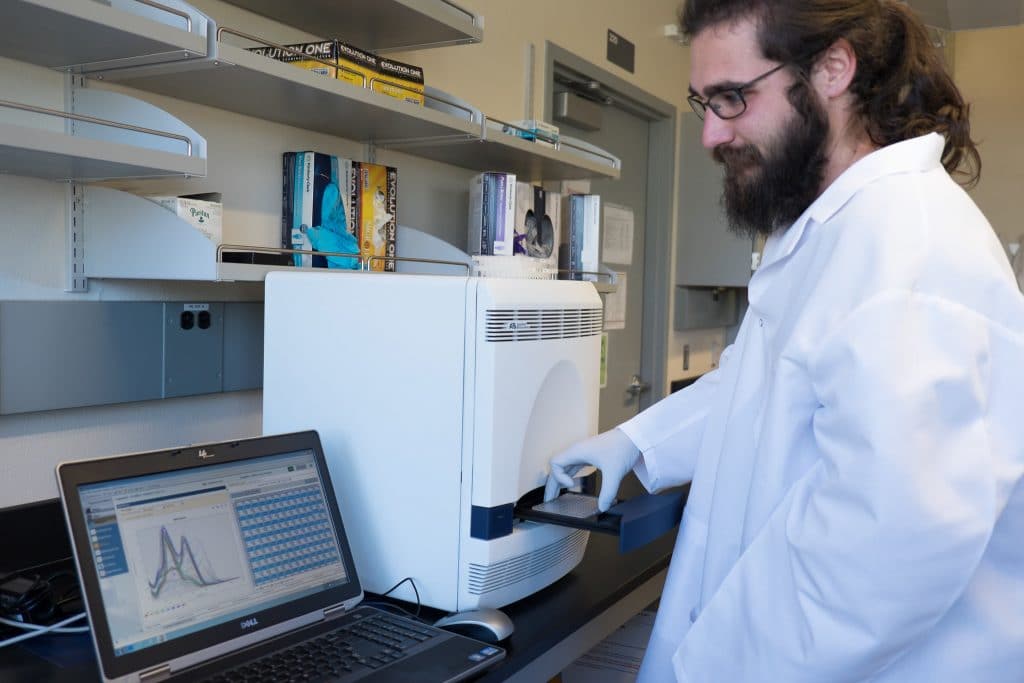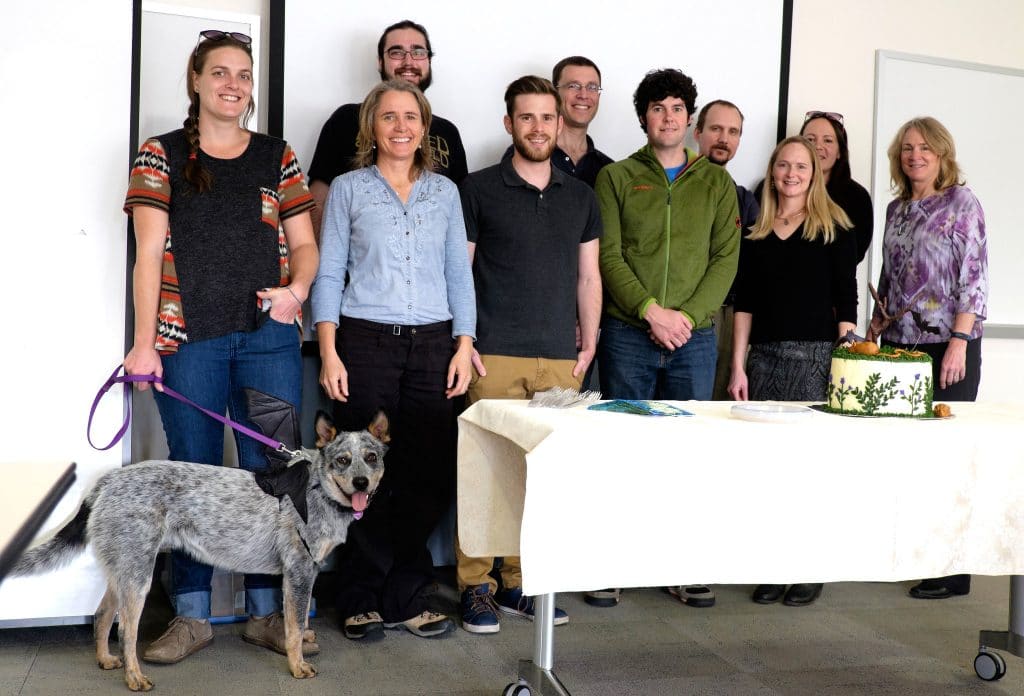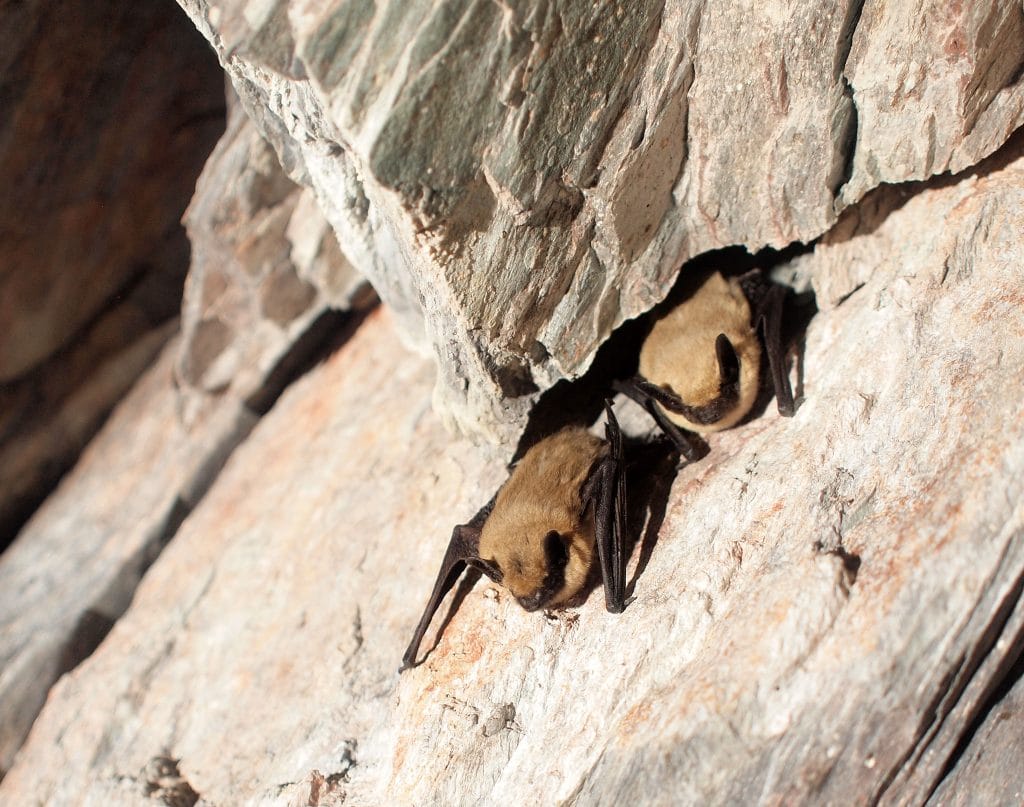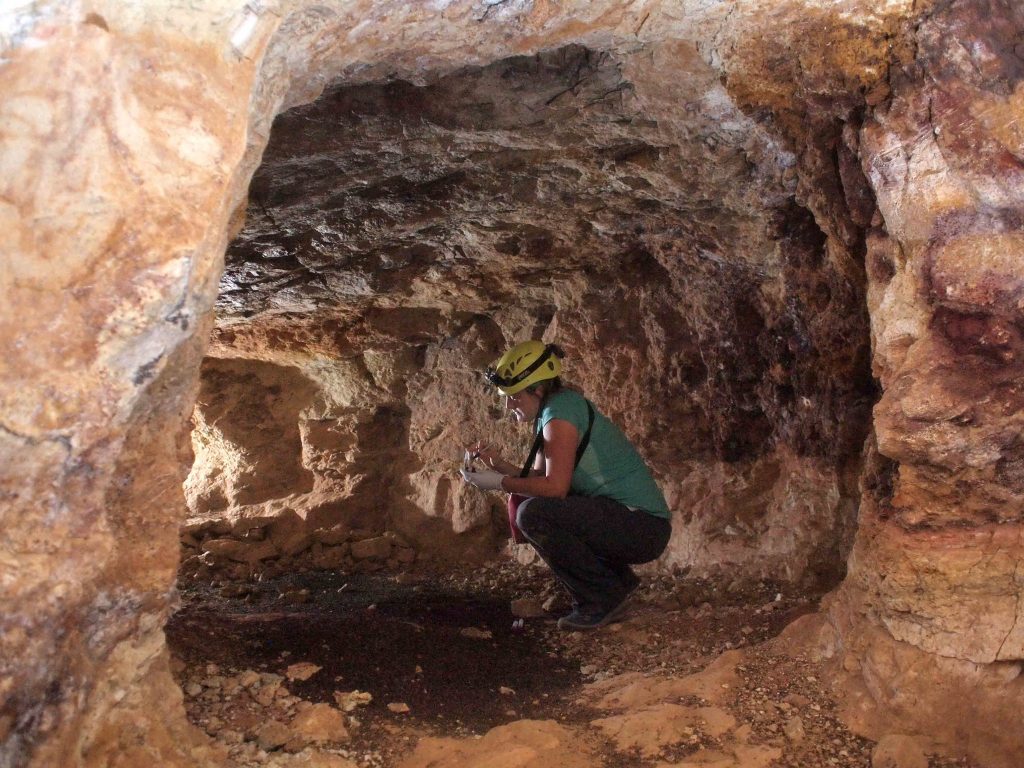Nov. 14, 2019
Here’s the thing about bats: They can fly. And they do that in the dark.
Those two factors make bats, which make up 20 percent of the mammal species, extremely difficult to study.
Geneticist Faith Walker and wildlife ecologist Carol Chambers wanted a better look at the 1,406 known species of bats, so after years of trying to meet the bats where they were, the two Northern Arizona University researchers instead turned to what the bats left behind: feces. Research into bat guano led to the creation of the Species from Feces assay, which can test DNA from bat guano and tell the researchers which species of bats live in a particular area.
“Poop doesn’t fly around in the dark and it’s easy to collect,” said Walker, who along with Chambers is co-director of the Bat Ecology and Genetics Lab at NAU. “You can walk around in the day with a collection kit in one hand and a cup of coffee in the other and sample in 10 leisurely minutes, instead of the tour de force required by mist netting (when we net bats we often have four cars, eight people and are out until midnight eating Oreos to stay awake). Hence, the fecal method is friendlier to bats and us, and it gives a broader timeframe for the bat species that were using a roost.”
Since publishing the Species from Feces research in 2016, which enabled the researchers to correctly identify 92 percent of bats to the species level (the other 8 percent can be identified to genus) throughout the world for which genetic data are available, they’ve helped other researchers and wildlife managers use the assay to better understand local populations. However, they wondered what else they could learn from fecal pellets, which they call the “gold nuggets” of wildlife biology thanks to their wealth of information about biodiversity, diet and disease without the need for trapping, handling or even observing the animals in question.

A lot, as it turns out, which led Walker, Chambers and a host of collaborators from NAU and the American Museum of Natural History (AMNH) to “A Fecal Sequel: Testing the limits of a genetic assay for bat species identification,” published today in PLOS One.
The follow-up study asked a number of different questions, all of which centered around potential obstacles in extracting usable DNA from bat guano:
- How old can guano be for DNA to still be viable?
- Can you detect a bat species represented by only a single fecal pellet in a background of other species’ pellets?
- Can the Species from Feces assay be used as a survey tool for bats in subterranean systems?
- Will it work in the tropics, where higher temperatures and greater humidity cause guano to degrade more rapidly?
Walker, who was the lead author on the paper, connected the various questions and determined what was needed to move forward with the various arms of the study. Then-master’s student Abby Tobin used her work in both ecology and caving to study how different gate types at the entrances of abandoned mines influence bats’ use of the mines. Colin Sobek, a genetics research specialist with the School of Forestry and the Pathogen and Microbiome Institute and genetics Ph.D. student Dan Sanchez have been part of the Species from Feces research for years and extracted and tested the DNA in the lab. Viacheslav Fofanov, a professor in the School of Informatics, Computing, and Cyber Systems masterminded the lab test for the species rarity question. Nancy Simmons, curator in the Department of Mammalogy at AMNH, conducted bat research in the Neotropics.
To test the assay in a variety of circumstances, researchers stored fecal pellets in both a high-humidity cave and a low-humidity cave near Flagstaff and let them age for up to 30 months. Every six months they would go into the caves and retrieve a subset of pellets, then run the assay on pellets at six, 12, 18, 24 and 30 months. For the rarity test, the team collected pure guano from three bat species and combined the pellets into mock communities, with the rare bat guano represented as a minuscule ratio to the other two. To determine the utility of the assay as a survey tool, they collected single samples of 200 pellets from more than 40 abandoned mines across the Southwest and performed visual surveys; they did the same at bat roosts in archaeological sites in the Belizean tropics.
On the whole, the results weren’t surprising, Walker said. The assay identified the rare bat DNA and verified that humidity contributed to more rapid degradation than time. It also added to what the original research showed: The Species from Feces assay is an exceptional tool for conducting bat surveys at roosts.
The biggest surprise came from the gold nuggets found in the tunnels of Maya temples. Walker said two of the three bat species found there feed on vertebrates—they found DNA from a local rodent in the guano of the big-eared woolly bat and cow DNA in the guano of the vampire bat. They also found DNA of the teardrop mosquito fish in almost all of the Belizean tunnels, which likely came from ponds from which bats drink. That’s significant because it shows bats themselves acting as an environmental DNA filter.

“Importantly, our work illustrated that our assay performs well in the tropics, but likely requires feces that is relatively fresh (less than 12 months old),” Walker said. “For the tropics it would be best to collect guano from active roosts. DNA does well in dry and dark conditions. We’re lucky that for most subterranean systems in the U.S. Southwest we have exactly that.”
We’re also lucky to have the bat species that we do, she said. Bats are a critical part of the ecosystem, and they’re in danger both from changing habitat and from a deadly fungus sweeping the nation.
“Most people appreciate bats because of the ecosystem services they provide, particularly eating insects. Insectivorous bats eat an enormous number of insects (a single little brown bat can eat up to 1,000 mosquitoes an hour, according to Bat Rescue), which can include crop pests and pathogen vectors like mosquitoes,” Walker said. “In Flagstaff, with West Nile virus detected last summer, we should be particularly appreciative of bats. However, the fungal disease called white-nose syndrome is killing millions of bats in the U.S. and is now on the West Coast and Texas. It hasn’t yet arrived in Arizona, and we don’t know for certain which species will be impacted. Hence, having a genetic tool that can be used to rapidly survey subterranean roosts is important and will allow us to better understand bat species presence before and after the disease arrives.”

What is Species from Feces?
Walker developed this assay to extract DNA from feces and test it to identify the species from which it came. Although scientists have been testing fecal DNA for two decades, Species from Feces was revolutionary in the extent of the coverage researchers got across the entire taxonomic order of bats, how reliable and precise the assay is and the ease with which researchers can now study bats. They not only identified which bat species use particular roosts, but scientists also have used the Species from Feces assay to confirm visual identifications of captured bats, identify bat carcasses at windfarms, screen fertilizer to determine the species that contributed guano, detect nectar-feeding bats from saliva on agave flowers and evaluate the effect gates on the entrance to mines have on neighboring bat populations.
The Species from Feces team has done work for more than 100 federal and state agencies, universities, museums and environmental consultancies in the past three years. Additionally, this assay has expanded well beyond bats; the lab does a lot of mammalian diet work and has identified plant and animal diet in everything from African lions and leopards to wombats and kangaroos to mule and pronghorn to giraffes and hippos. Walker will soon add a 31,000-year-old giant ground bolus sloth to that list to determine if she can identify what the animal ate.


Heidi Toth | NAU Communications
(928) 523-8737 | [email protected]
Source : http://news.nau.edu/species-from-feces-update/#.XdZqOJxOlr1


